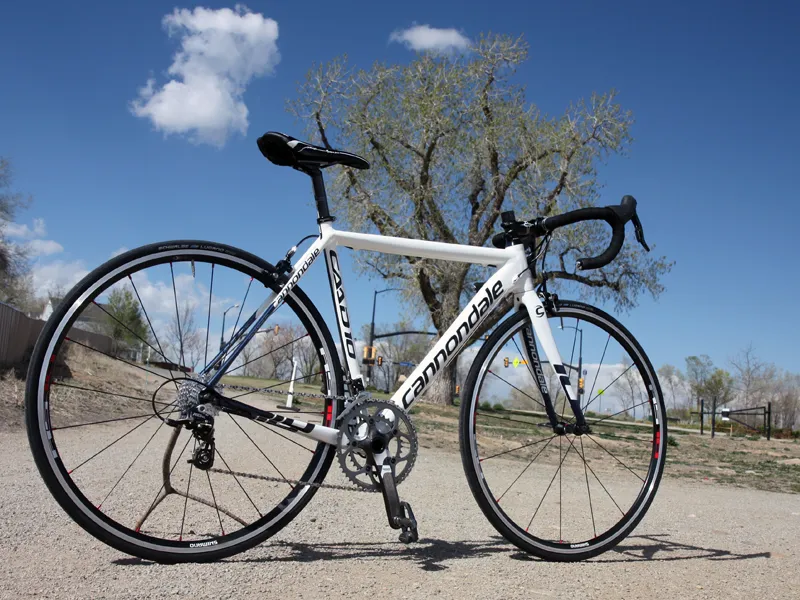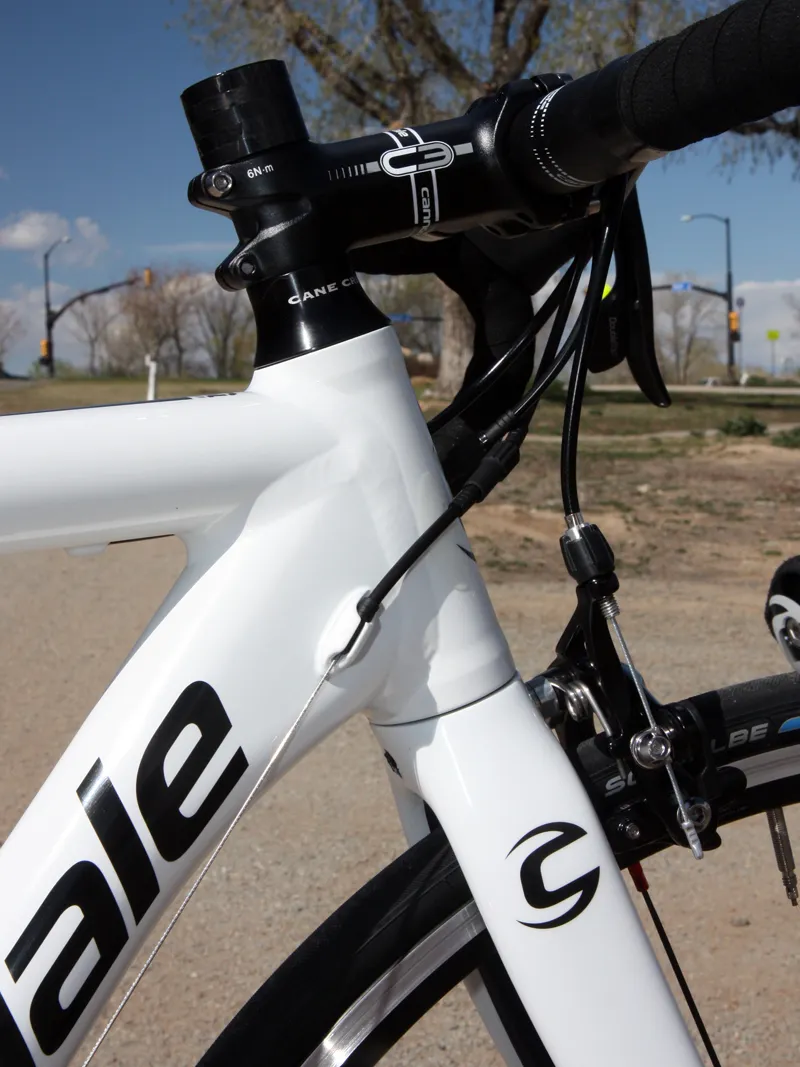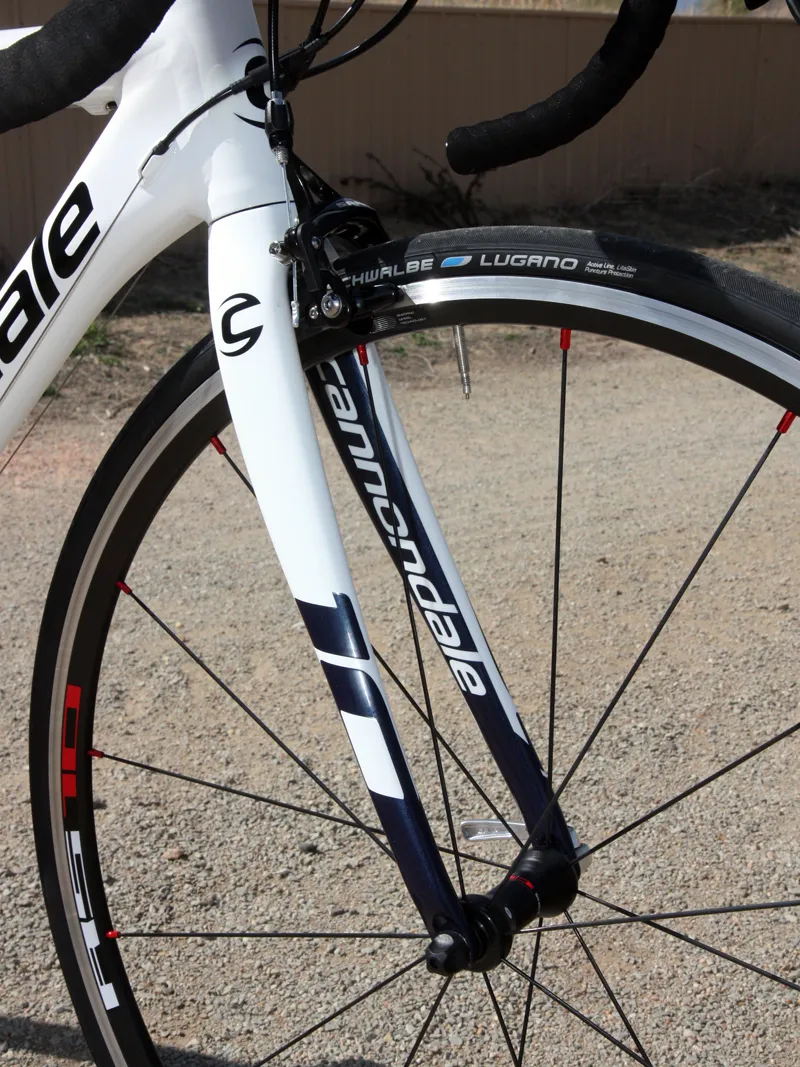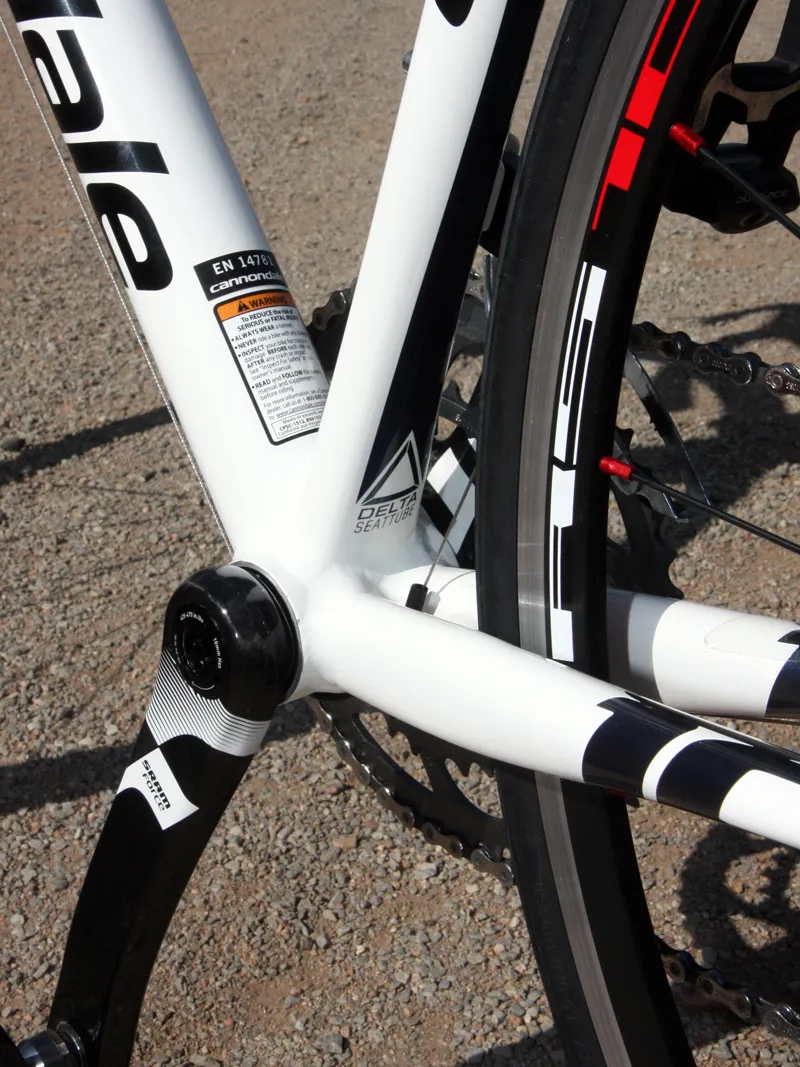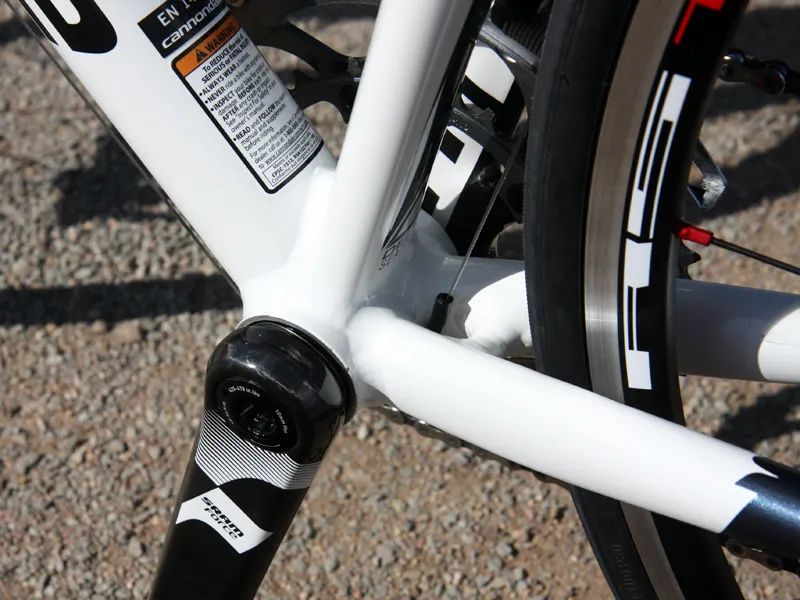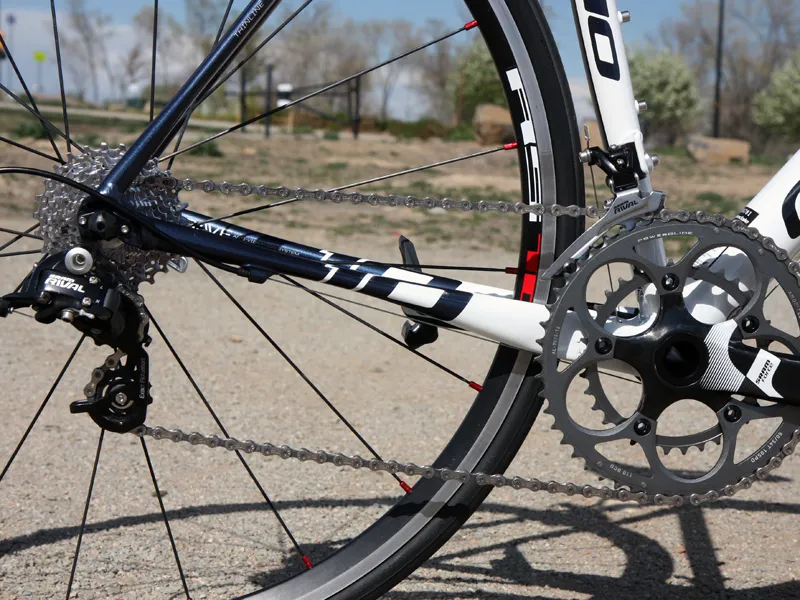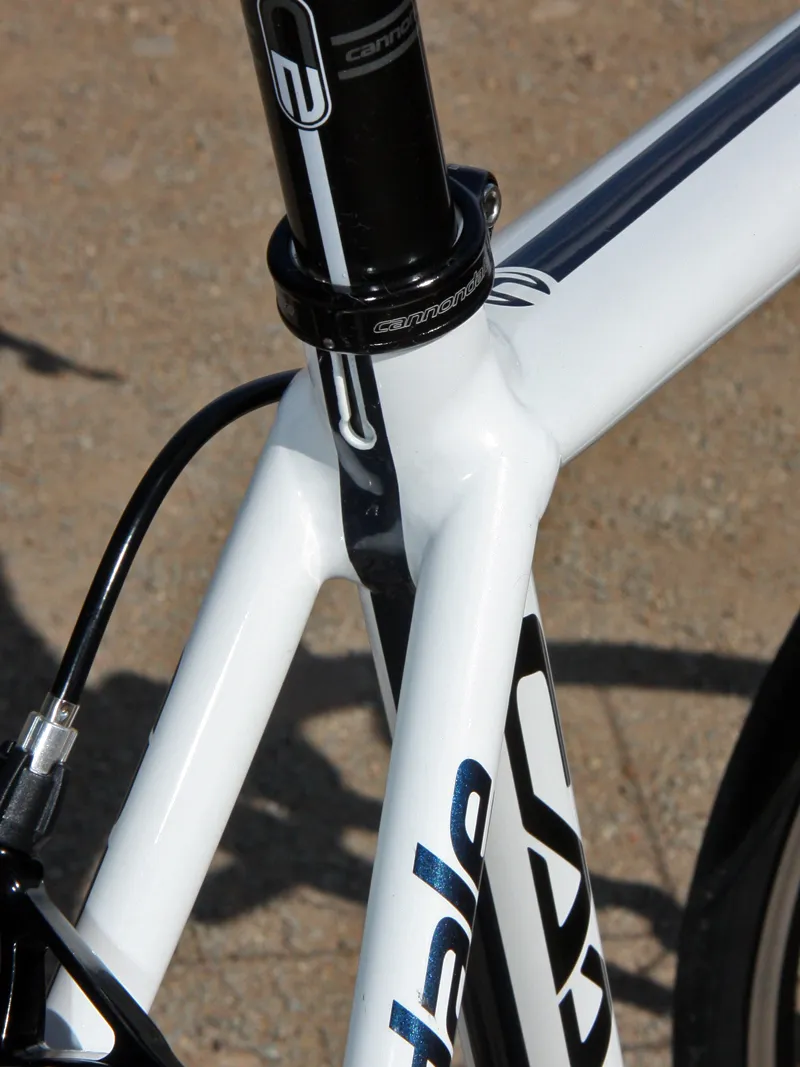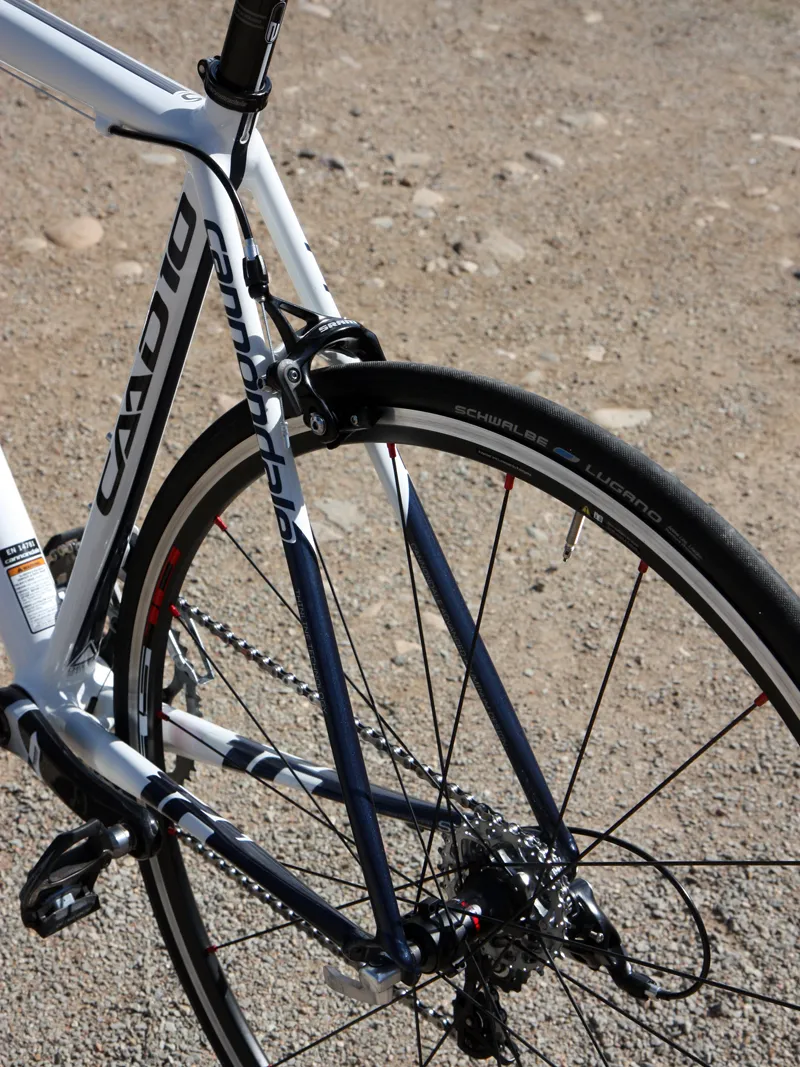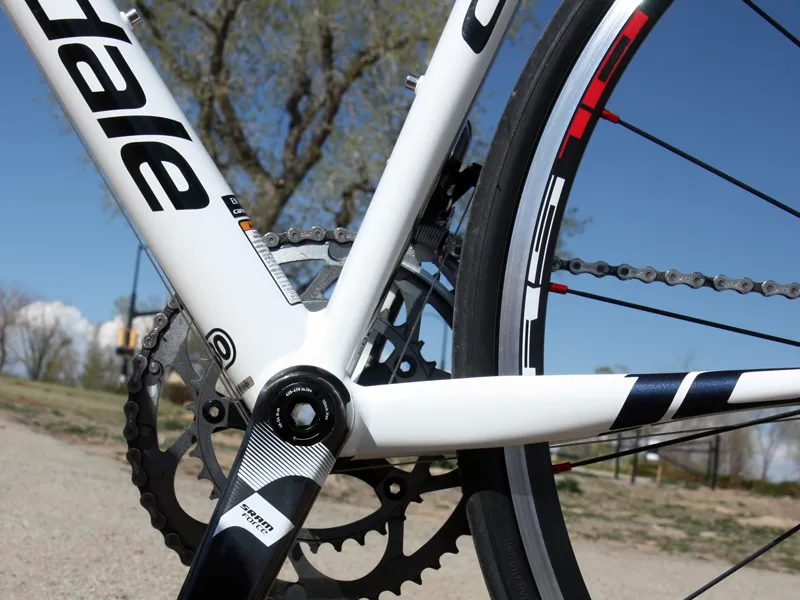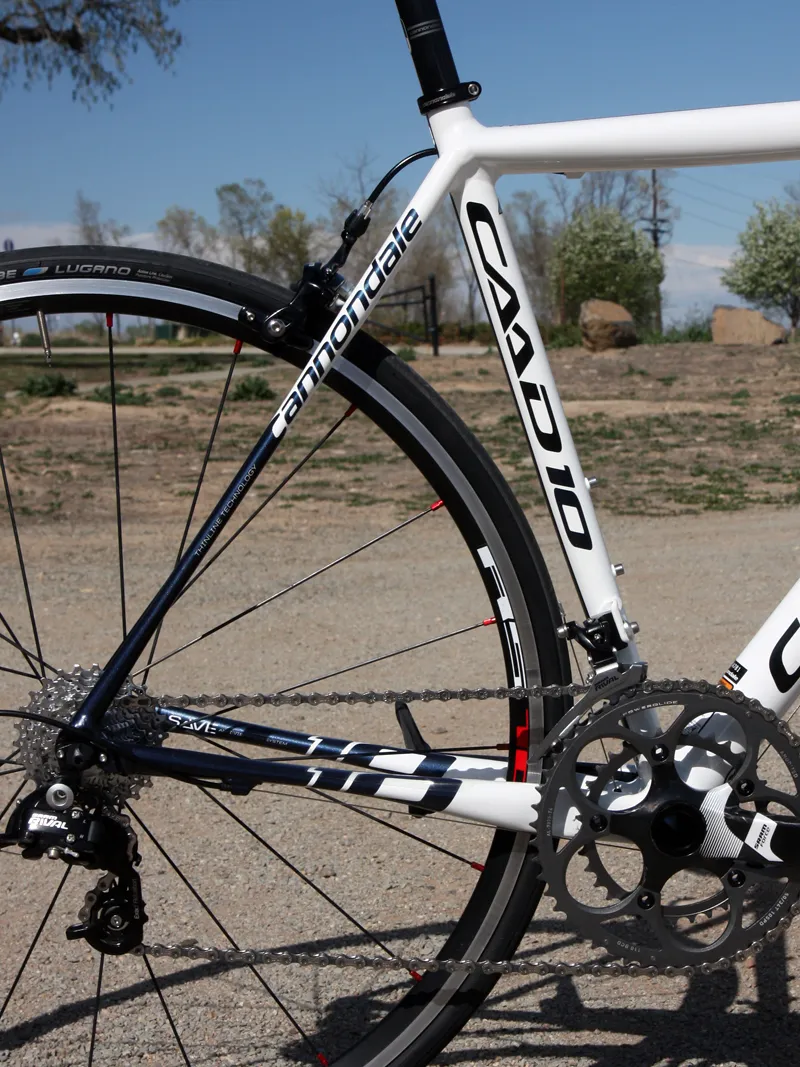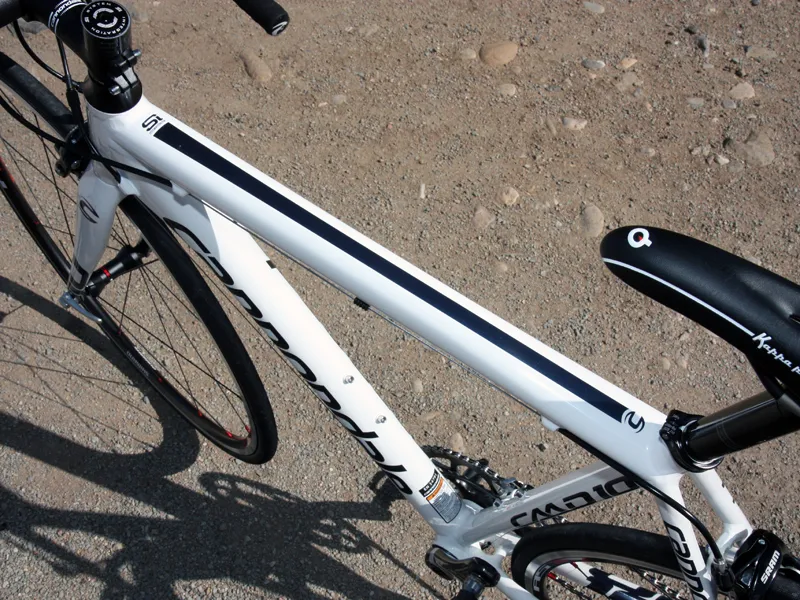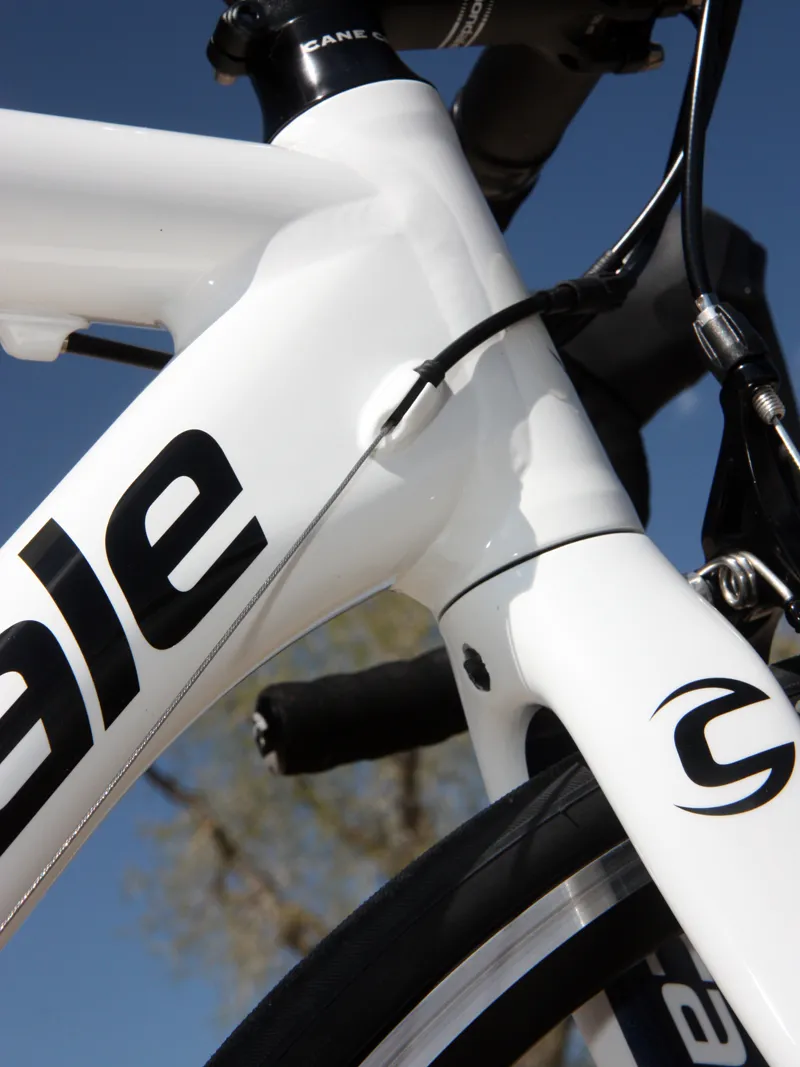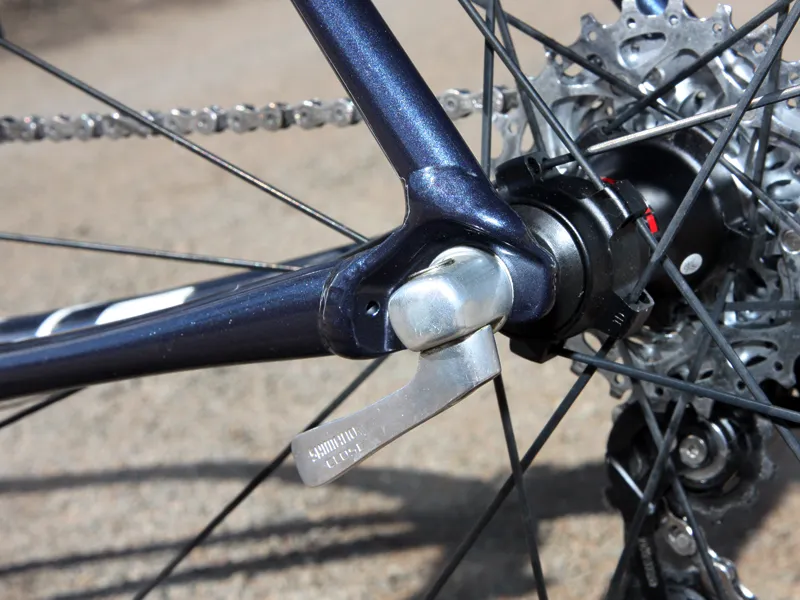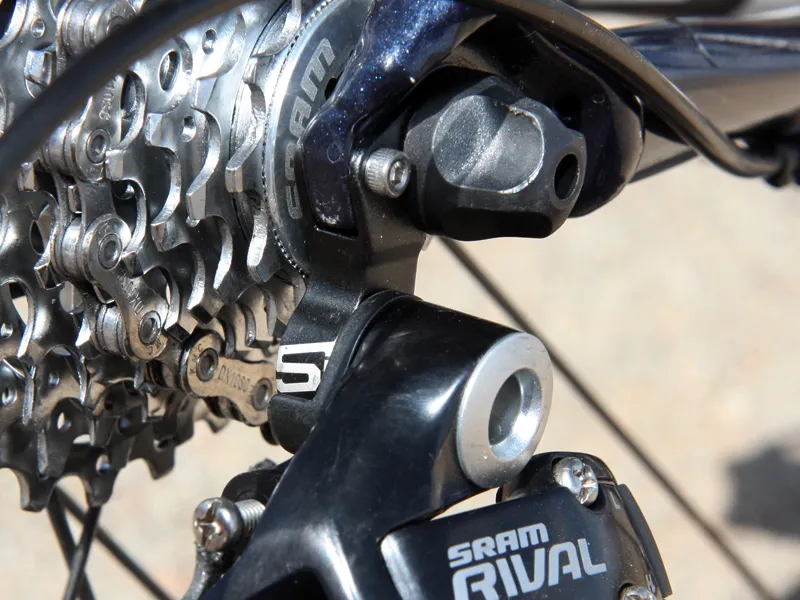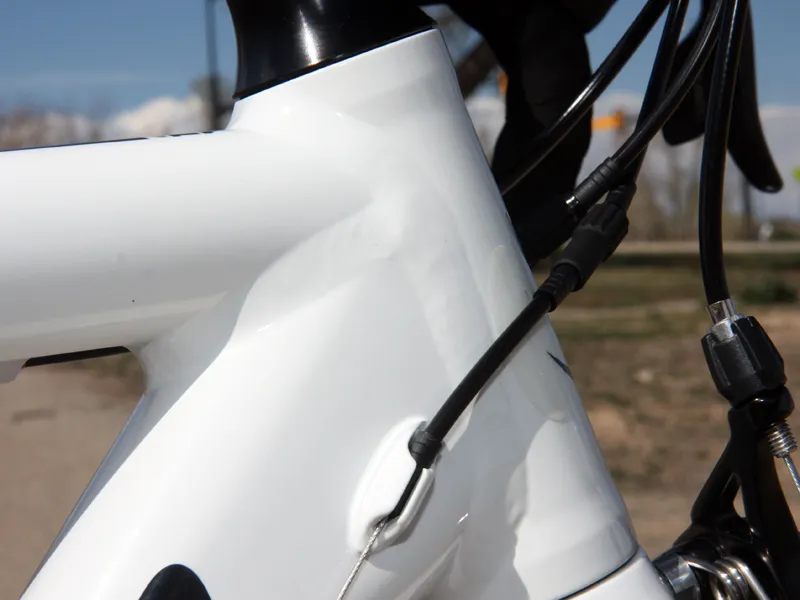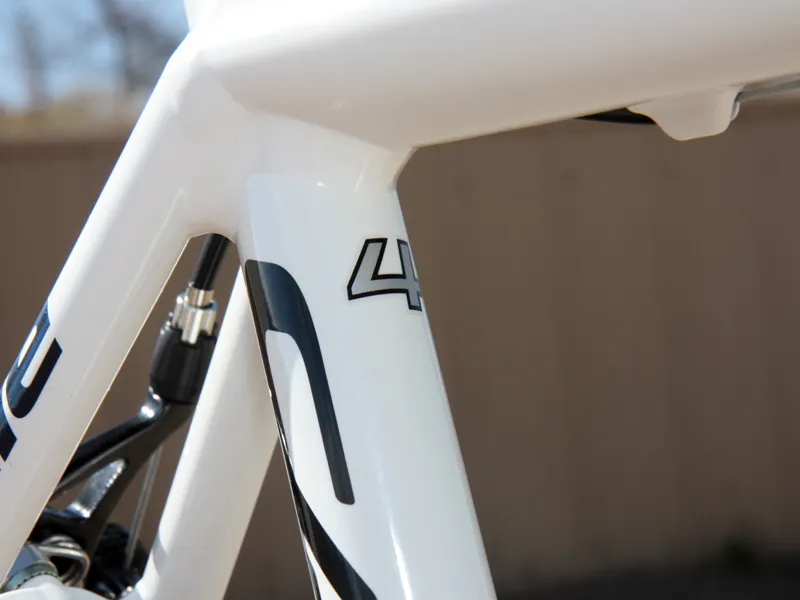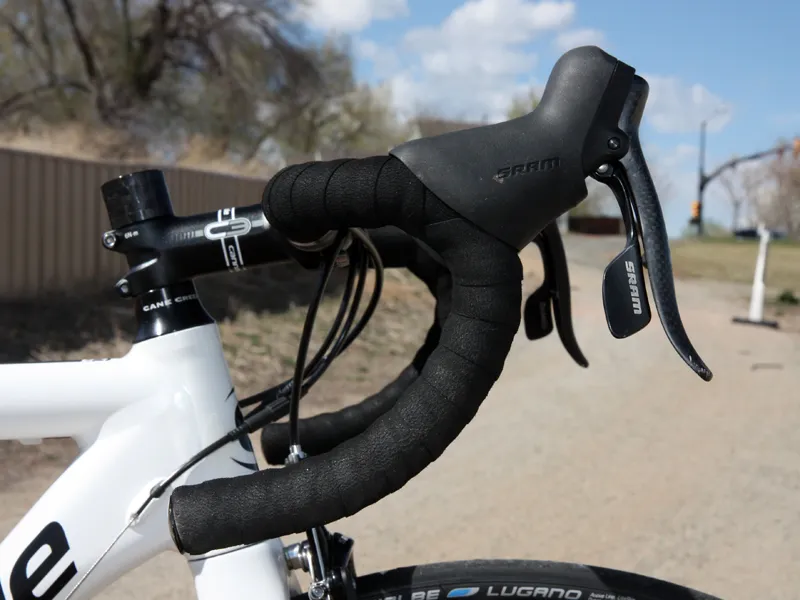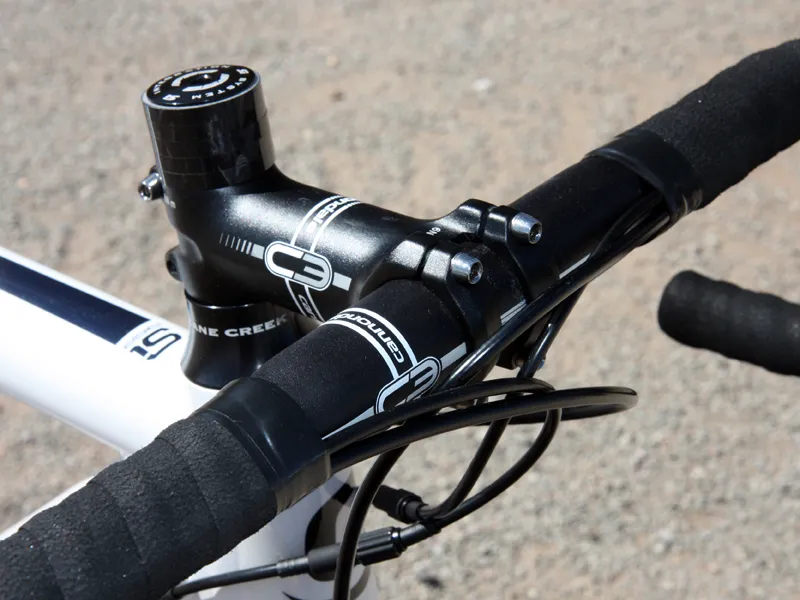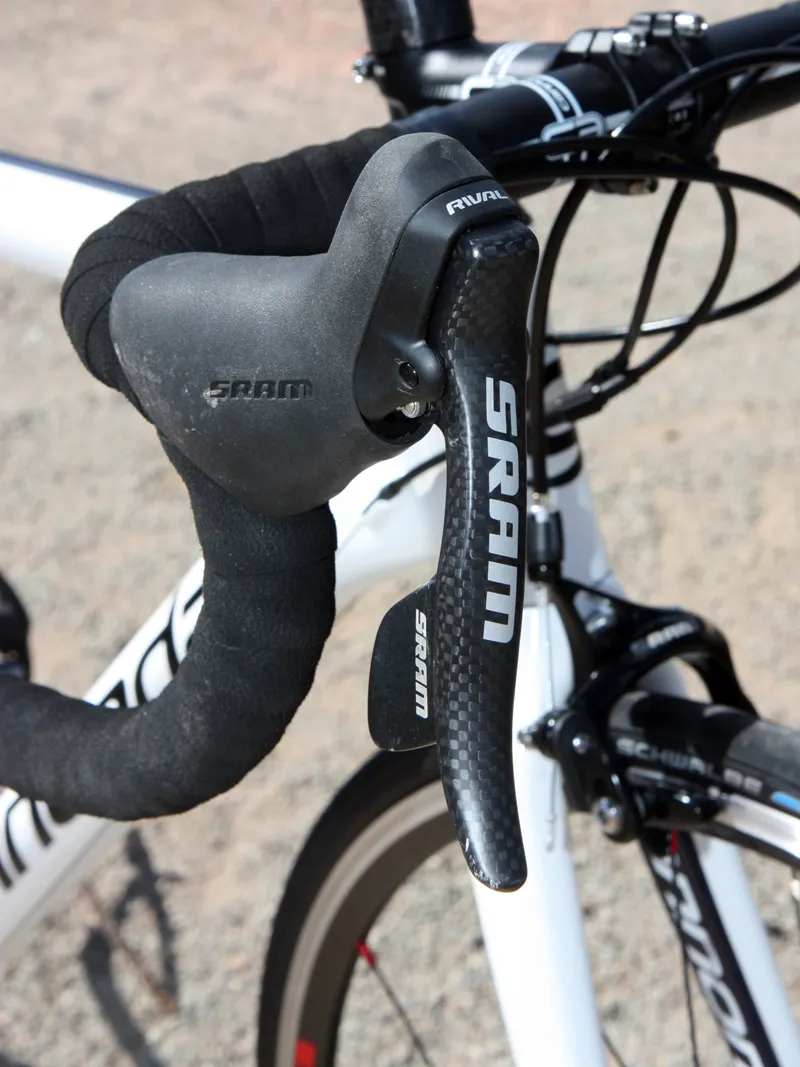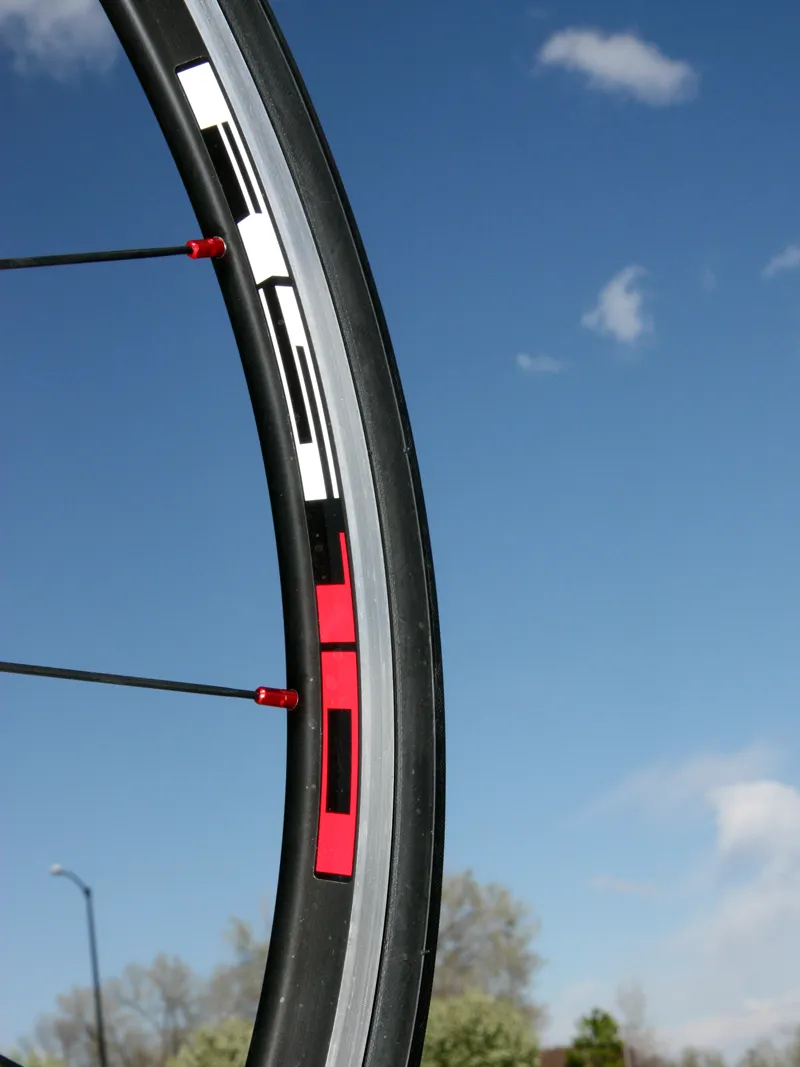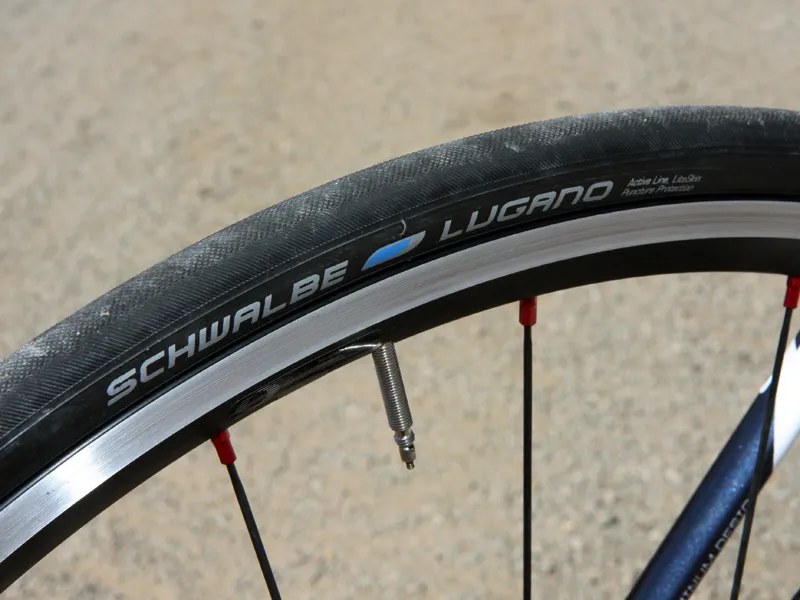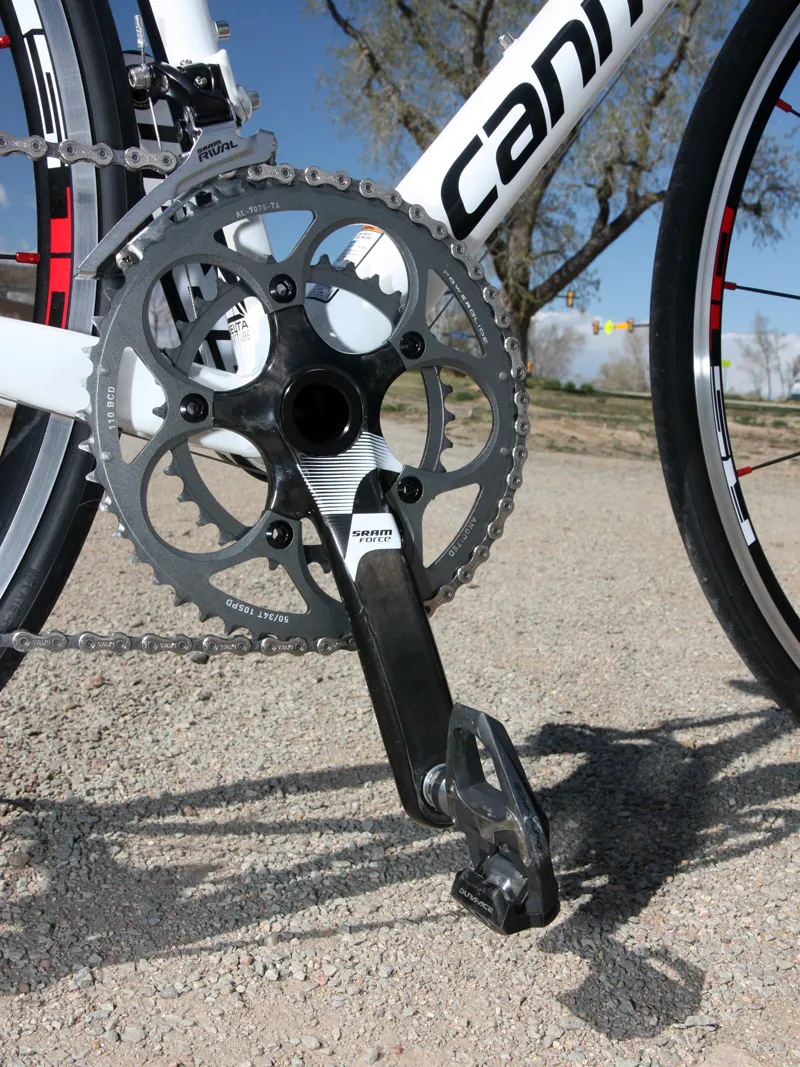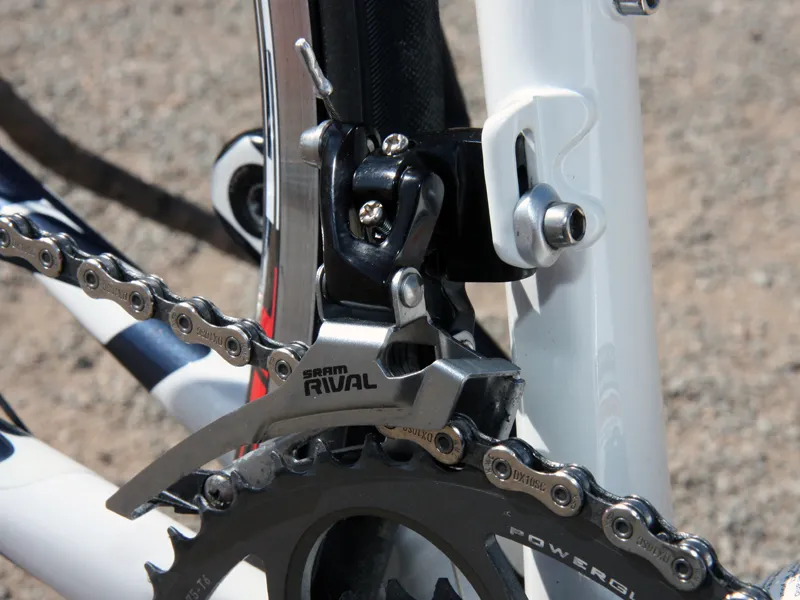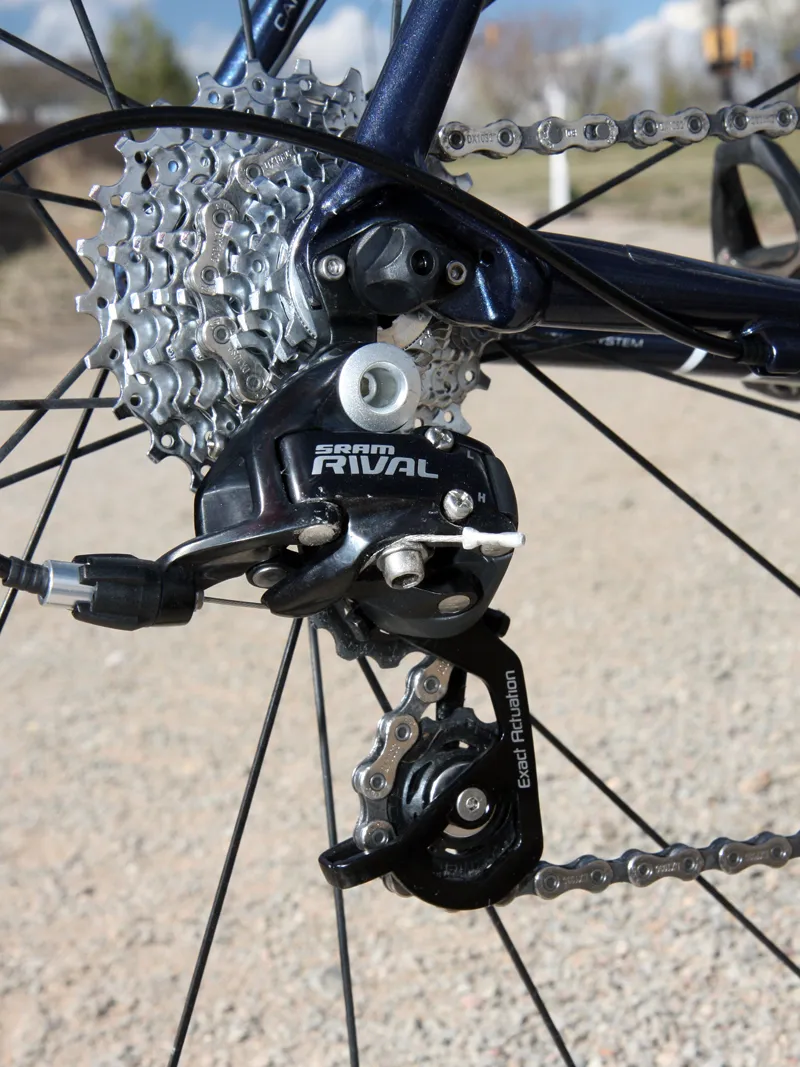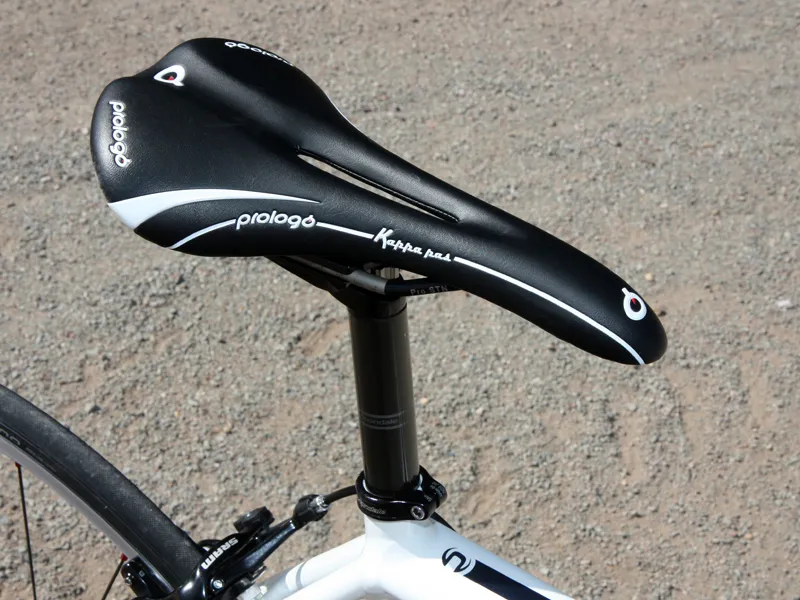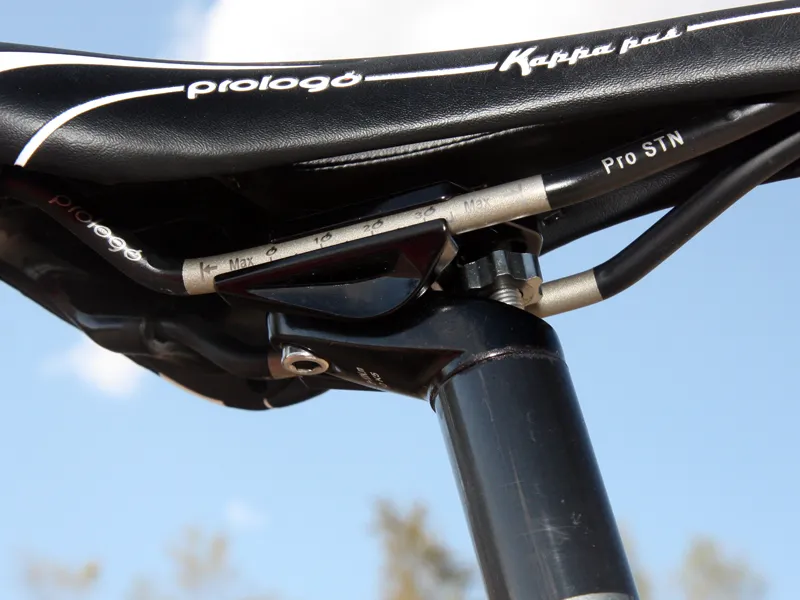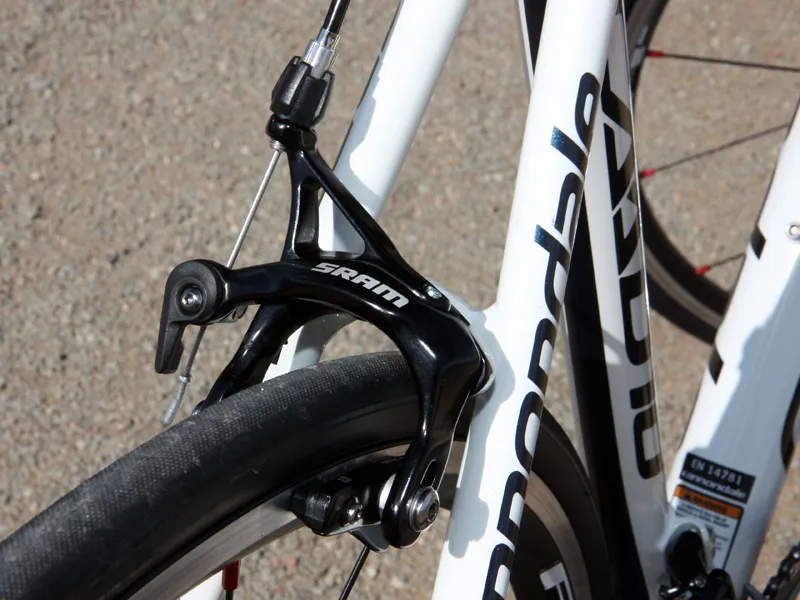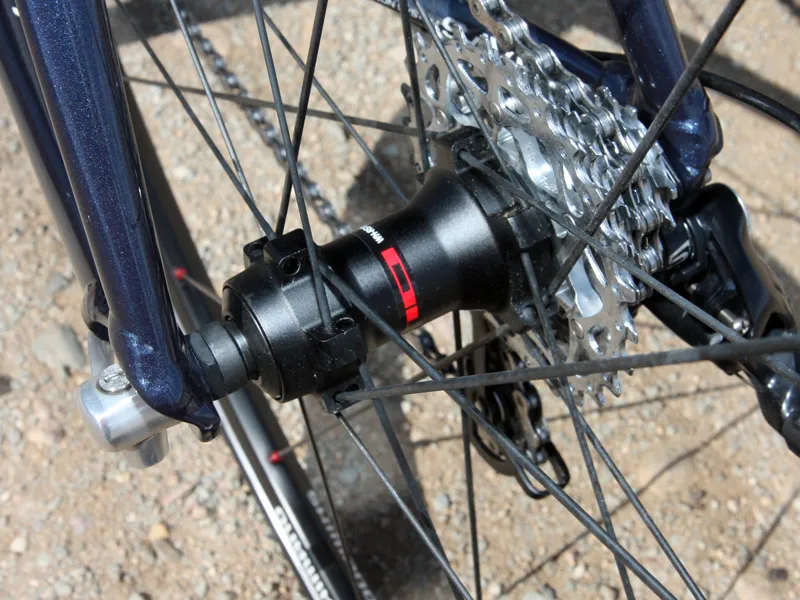Cannondale's CAAD9 aluminum chassis was a privateer road racer's secret weapon, offering very good frame stiffness and weight at a relatively bargain-basement price. The new CAAD10 is even more so, being substantially lighter than before and with a more refined ride quality. Our CAAD10 4 Rival tester has proven to be especially good value and is just a set of tires and cables away from being all that most of us will ever need, and all at US$1,799.
Ride & handling: Excellent manners on the road with a feel that rivals mid-range carbon
Cannondale can't wield a magic wand and overcome the inherent material property differences between aluminum and carbon fiber but the performance of their new CAAD10 does an excellent job of showcasing what's possible when the limits are pushed. Even when pressed hard, the CAAD10 makes an admirable showing against the much more expensive SuperSix Hi-Mod.
Overall stiffness is very good in most situations and generally on-par – if not better than – many cheaper carbon bikes out there, especially while just cruising along, as many buyers will likely spend most of their time doing anyway. It's not until you really have to put your foot on the gas that the differences between the CAAD10 and the SuperSix Hi-Mod or standard Six become more evident. There's a little more front-end twist when sprinting and the bike doesn't reward surges in power quite as immediately, but neither change is at all objectionable and the SuperSix Hi-Mod establishes some heady benchmarks.
Cannondale's frame designers have spent a lot of time engineering some vertical flex into the rear end of the new CAAD10 and it shows out on the road with a noticeably smoother feel than its predecessor. That being said, aluminum still can't match carbon fiber's ability to damp vibration and while the CAAD10 offers a pleasant ride on most surfaces, it's more "firm" than "buttery smooth", particularly on nastier obstacles like potholes and washboarded dirt roads. On the plus side, that firm feel is nicely balanced from front to rear with no sense of disconnectedness between the two ends.
Riders who find carbon frames to be a bit too isolating and prefer a little more feedback will likely be very happy, as road feel is excellent, with a generally snappy personality overall. You're always keenly aware of what the pavement is like beneath you and the CAAD10 chassis is constantly transmitting good feedback on how the tires are behaving.
There's absolutely no compromise in handling, though, as Cannondale's value-packed CAAD10 chassis may sport a bargain-basement price but its geometry is wisely copied millimeter-for-millimeter from the flagship SuperSix. As a result, handling is simply brilliant, with an intuitive turn-in on both fast and slow corners plus rock-solid stability even while careening down blistering Rocky Mountain descents.
Likewise, fit is spot-on for high-performance riding as long as you're not expecting a casually upright "endurance" machine. Cannondale make some efforts to cater to that crowd with the extra-tall headset cone and a generous allotment of spacers but racer-types should still be able to get their desired positions by swapping to a standard cone and slamming the stem.
Even the total weight isn't much of a deterrent to speed provided you're not just doing hill repeats all day. Total weight as tested without pedals was just 7.83kg (17.26lb) and swapping in nothing more than a set of mid-range aluminum race wheels and proper tires brings that number closer to 7kg flat.
Frame: Elaborate shaping brings out the potential of aluminum
Top-flight carbon fiber bikes still hold an advantage over aluminum in terms of weight, stiffness and ride refinement owing to its uniquely anisotropic material properties – meaning the material itself can be tuned to have directional stiffness and flex – but an ultra-aggressive campaign of tube shaping on the part of Cannondale's frame engineers has done wonders with the CAAD10's all-aluminum backbone.
Many of the frame features are borrowed from the company's Flash carbon hardtail, including the strategically flattened seat- and chainstays, the extra-wide seatstay spacing, the swaged and ovalized 'Delta' seat tube, and a top tube that's wider and flatter at the seat cluster and squared off at the head tube for extra front triangle stiffness without overly impinging on knee clearance.
Cannondale have also infused the CAAD10 with a tapered 1-1/8 to 1-1/4in head tube, a hydroformed down tube that's especially bulbous up front, the company's trademark BB30 bottom bracket shell, miniscule alloy dropouts and a sandwich-style rear derailleur hanger that's stiffer than simpler one-sided arrangements but will stay cleave off in a bad wreck.
The 1,230g actual frame weight for our 52cm tester is greater than Cannondale's 1,150g claims (for a larger 56cm sample no less) but that doesn't mean that figure isn't believable. That mark is for an anodized sample instead of our painted one (paint is surprisingly heavy and lighter hues like our white CAAD10 4 require more of it to be opaque) and we've also included the seat collar, hanger and bottle bolts. The all-carbon fork is spot-on at 390g.
The available size range is very generous, too, with top tube lengths ranging from 515mm all the way to 600mm – bravo. Long-time Cannondale devotees will want to note that production has now moved overseas. That's not necessarily a downside as far as quality is concerned but unlike CAAD frames of yesteryear, the welds on the CAAD10 frame aren't flawlessly smooth.
Equipment: Highly competent mix overall but dreadful tires and sub-par cables
The build kit on our CAAD10 4 is especially good for a bike at this price, likely due to the lower cost of the aluminum frame versus a carbon one (lest you believe otherwise, carbon frames aren't just injection molded from a pot of amorphous goo).
Save for some extra mass, the SRAM Rival DoubleTap levers, derailleurs, and PG-1070 cassette offer nearly identical shift performance to Force and Red – even with the subbed-in KMC chain – and Cannondale upgrade the crankset to a light and narrow Force BB30 carbon unit in your choice of standard or compact. We're less enamored with the SRAM Apex dual-pivot calipers, however, as they're notably flexier and less positive feeling than their higher-end brethren (or comparably priced units from Tektro for that matter).
We applaud the decision to go with standard instead of aero wheels, since at this price, the latter would be prohibitively heavy. The Shimano RS10 aluminum clinchers still aren't particularly light at nearly 2kg for the pair but they're impressively stiff, the rims are slightly wider than typical, and the cup-and-cone bearings can be easily serviced and perfectly tuned, unlike low-quality cartridge bearing setups.
Save for the Prologo Kappa Pas saddle, most of the remainder of the kit is filled in with Cannondale's house-brand alloy bar and stem plus a carbon-shafted seatpost – all of which did their duty with minimal fuss. The only major demerits come with the tires and cables.
The Schwalbe Lugano folding clinchers are a reasonable weight at 290g apiece and have decent grip but rolling resistance is almost unbelievably high – to the point where we stopped a couple of times during the maiden voyage trying to figure out what was broken. The stiff, overly rubberized sidewalls also lend a crude, stiff and dull ride quality.
It wasn't until we swapped out the low-rent rubber for something nicer – in this case, Specialized's awesome new S-Works Turbo – that the CAAD10 revealed its potential. If you're a privateer racer and already have some better wheels for competition then feel free to use the stock Schwalbe Luganos until the cords show. Otherwise, we'd suggest swapping them out before you even walk out the shop door.
Cables and housing were also disappointing, though not to the same degree. Regardless of how carefully we finished the ends or what kind of lube we used, overall friction was frustratingly high – not to the point where things didn't work but enough that it restricted the smooth feel that we know the drivetrain is capable of from previous experience. Despite those two oversights, the Cannondale CAAD10 4 Rival still delivers the goods on the scale, especially at this price. Bottom line: yes, please.
